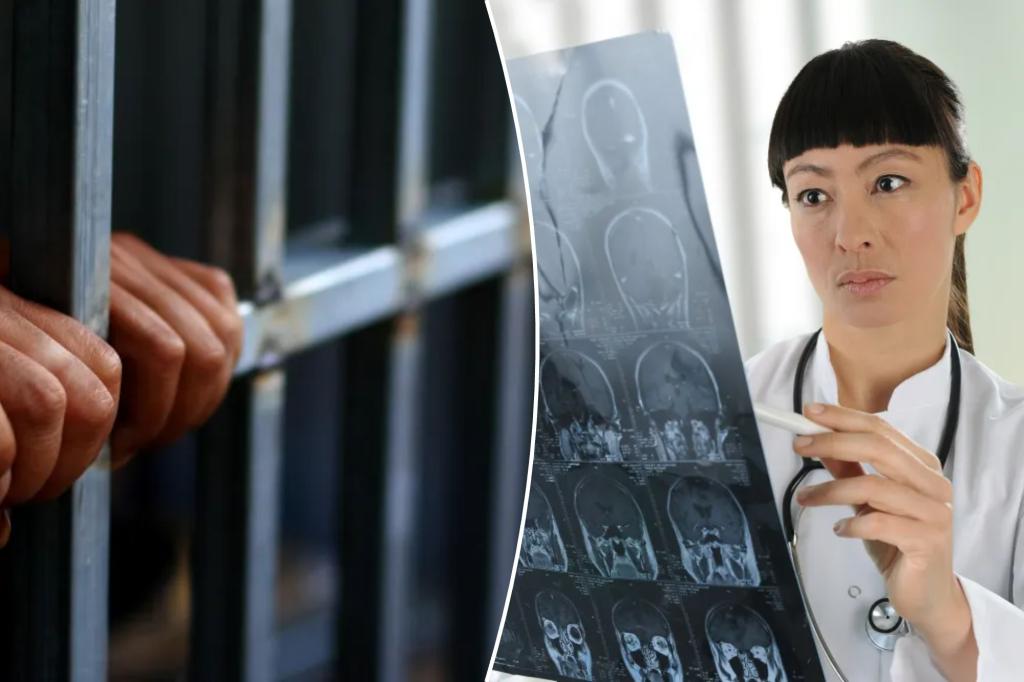Born bad — or just banged up?
A new study suggests that damage to a key part of the brain involved in judgment and emotional regulation could explain why some people suddenly begin displaying violent or criminal behavior.
The findings support earlier research showing that head injuries are far more common in the US prison population than among the general public.
“This work could have real-world implications for both medicine and the law,” said Dr. Christopher M. Filley, professor emeritus of neurology at the University of Colorado School of Medicine and co-author of the new study.
“Doctors may be able to better identify at-risk patients and offer effective early interventions,” he added. “And courts might need to consider brain damage when evaluating criminal responsibility.”
Filley’s team examined brain scans from 17 people who began committing crimes after suffering head trauma caused by strokes, tumors or traumatic brain injuries (TBIs).
Then they compared those scans to over 700 others from people with different neurological issues, such as memory loss or depression.
The researchers found that the brain’s right uncinate fasciculus was the most consistently injured area among individuals who engaged in criminal behavior.
“This part of the brain, the uncinate fasciculus, is a white matter pathway that serves as a cable connecting regions that govern emotion and decision-making,” Filley explained.
“When that connection is disrupted on the right side, a person’s ability to regulate emotions and make moral choices may be severely impaired,” he added.
Past research has shown that people with a history of traumatic brain injuries are more likely to struggle with depression, substance abuse, aggression and antisocial behavior.
They also have a higher likelihood of acting out sexually and lacking self-restraint when it comes to inappropriate thoughts and behaviors — even if they make a full cognitive recovery.
A Centers for Disease Control and Prevention report estimates that between 25% and 87% of inmates in US prisons and jails have experienced a head injury or TBI, compared to just 8.5% of the general public.
Studies also show that incarcerated populations are significantly more likely to include people with moderate to severe TBIs and a history of repeated head injuries. In many cases, the damage occurred before the person committed their first offense.
As a result, a growing number of defense attorneys are turning to neuroscience in the courtroom, citing brain injuries as a possible explanation for their clients’ criminal behavior.
“We’re seeing way more of it in the courts than we used to, and I think that’s going to continue,” Judge Morris B. Hoffman of Colorado’s 2nd Judicial District Court told Discover Magazine.
An analysis found more than 2,800 recorded legal opinions between 2005 and 2015 in which criminal defendants in the US used neuroscience as part of their defense.
Roughly 20% of those who presented this kind of evidence earned some form of favorable outcome — whether it was a new hearing, a reversal or even a more lenient deadline to file legal paperwork.
The new findings about damage to the brain’s right uncinate fasciculus may bolster such arguments.
“While it is widely accepted that brain injury can lead to problems with memory or motor function, the role of the brain in guiding social behaviors like criminality is more controversial,” said Dr. Isaiah Kletenik, assistant professor of neurology at Harvard Medical School and lead author of the study.
He noted that the research raises important ethical questions about culpability and free will.
“Should brain injury factor into how we judge criminal behavior? Causality in science is not defined in the same way as culpability in the eyes of the law,” Kletenik mused.
“Still, our findings provide useful data that can help inform this discussion and contributes to our growing knowledge about how social behavior is mediated by the brain.”
Read the full article here


